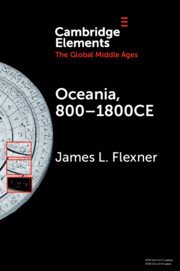Element contents
Oceania, 800-1800CE
Published online by Cambridge University Press: 25 November 2021
Summary
- Type
- Element
- Information
- Online ISBN: 9781108913782Publisher: Cambridge University PressPrint publication: 23 December 2021
References
- 12
- Cited by

